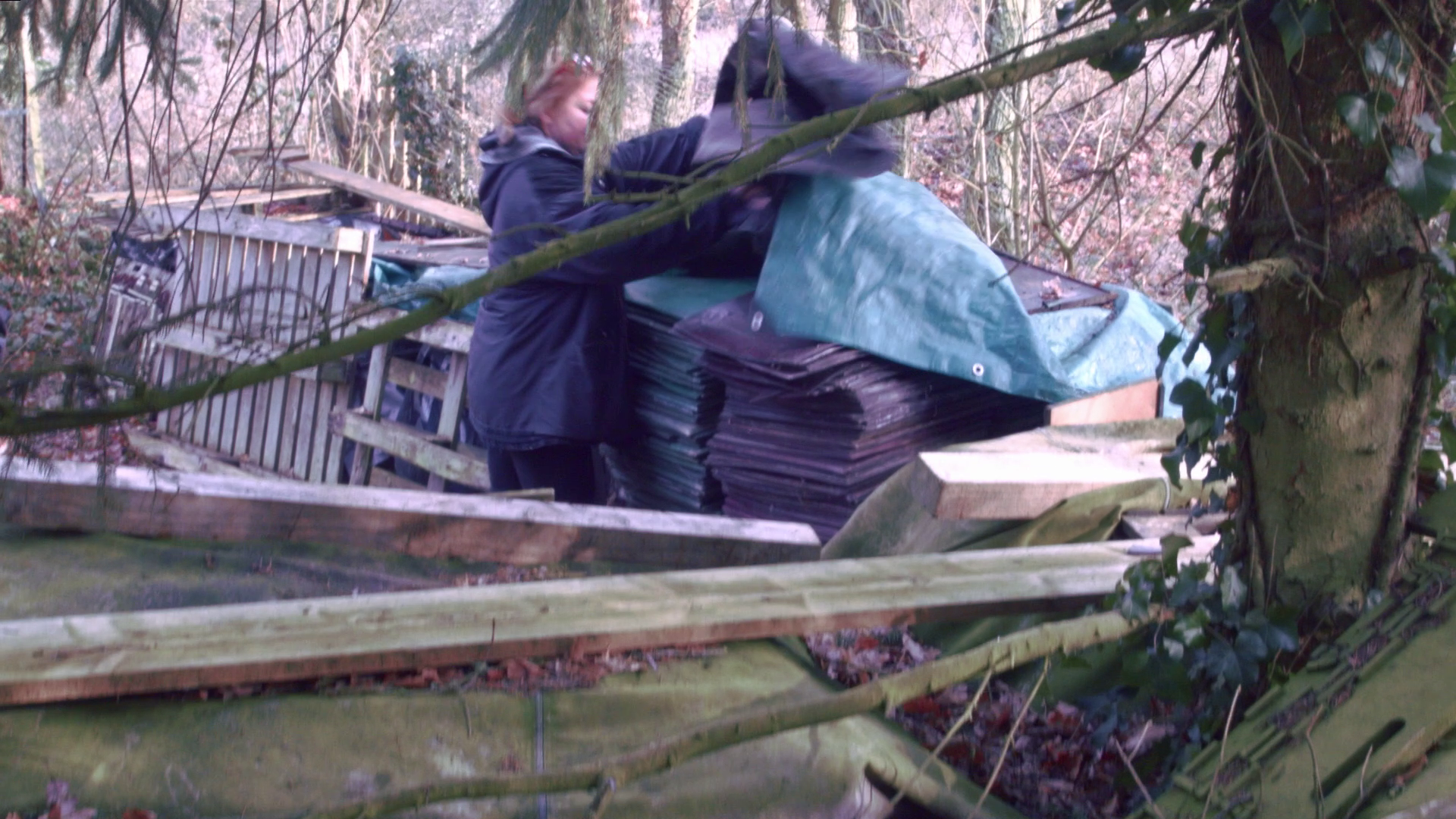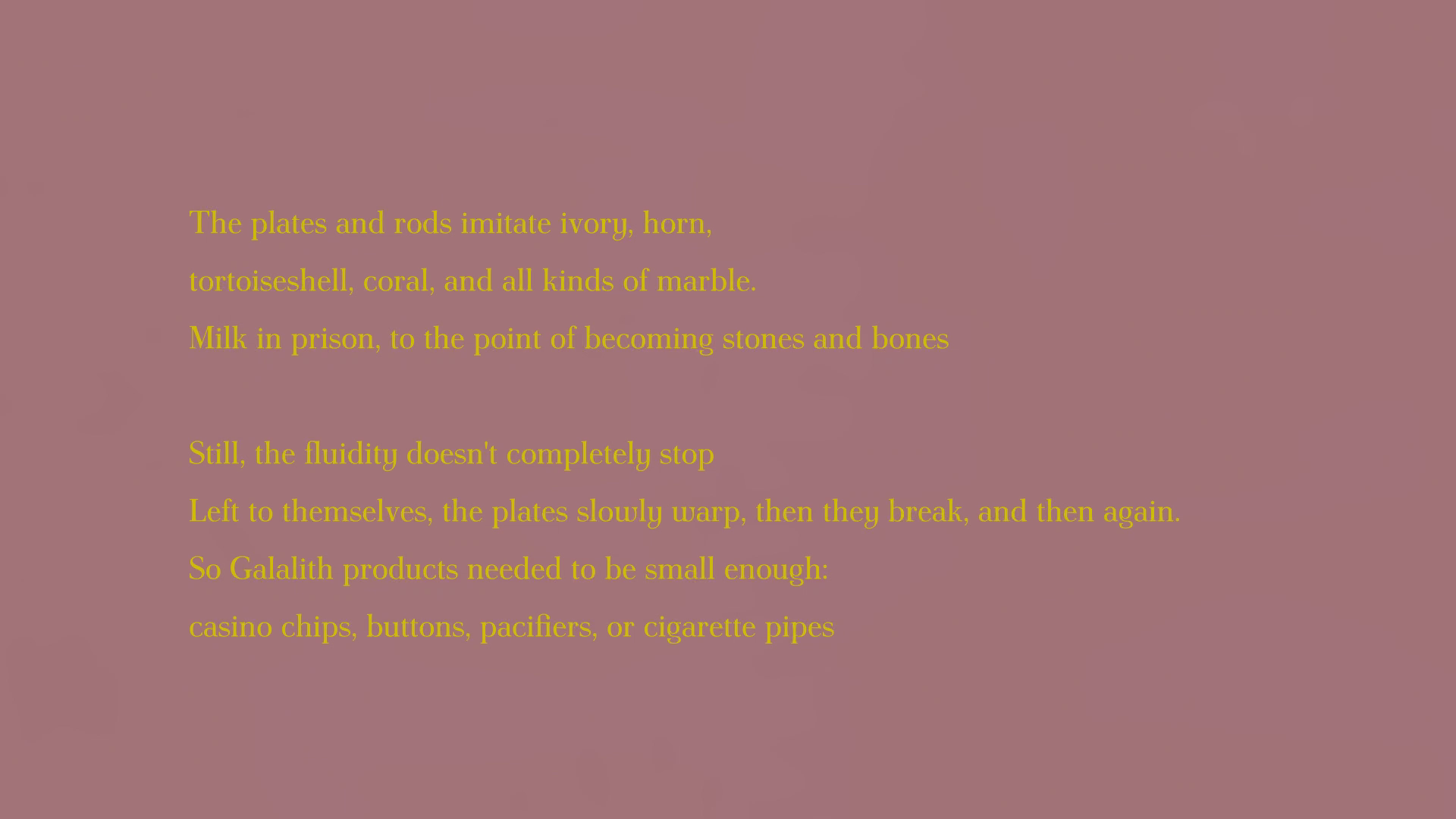Content type: Visual essay composed from film stills (part of the larger ongoing research project Melkweg [The Milky Way])
Credit: Jan Tomza-Osiecki (Alumnus, MA Artistic Research, KABK, 2020)
Year: 2020–ongoing
‘Modern plastics were invented at a time when to be plastic was defined in popular dictionaries as being malleable and pliable, and the same was attributed to milkiness.’
Introduction:
Did you know that in the 1930s, plastic was made from petrified milk? And, milk plastics were thought to be the saviour of the dairy industry as they offered a solution for what to do with the milk protein byproducts of producing butter and cream?
Neither did Jan Tomza-Osiecki. But ever since he learned about the historic Dutch trade in petrified milk, he has been undertaking a long-term research project titled Melkweg (The Milky Way), which attempts to trace the history of this material. Blending elements of critical business theory, material culture studies, sculptural forensics and intersectionality, Melkweg does not want to sell the idea of milk plastics as a solution to the plastic waste crisis. There has been a recent uptick in products made from milk plastic films which are branded as ecological. But, as Tomza-Osiecki points out, the milk-production industry is rife with its own problems, ethical dilemmas and ecological consequences.
What the project does offer, however, is new insights into the plastic-waste narratives we know today. Melkweg suggests that we can do other, be other, and produce other. It re-examines the cultural, political and social histories tied into materials. Melkweg also asks what we should do with our existing plastics at large and milk plastics in particular. His film/visual essay Aude’s Milk Stone Garden delves into the work of one artist who suggests we should "soak" ourselves in the materials that already exist rather than creating anew.
The following images/text are a condensed version of the visual essay Aude’s Milk Stone Garden that Jan Tomza-Osiecki produced as a film for his KABK graduation project. To see the full visual essay, please visit the project’s site here.











‘Modern plastics were invented at a time when to be plastic was defined in popular dictionaries as being malleable and pliable, and the same was attributed to milkiness. I think that today’s edible milk film is the same regressive mode of production. Besides the straight-up cruelty, our inhumane treatment of animals at industrial dairies is a measure of speciesism, privileging human rationality not because of what it is, but because other species do not have it. Do they deserve to be reduced to bio-cogs in our machines?’







‘The milk plastics that I can still see, the ones that Aude stocks, were made using formaldehyde, and so they are literally toxic [if ingested], unlike [today's] milk film.’




‘Today we’re in the midst of a milk plastics revival. New companies have appeared, and instead of ornamental plastic stone, they produce an edible, transparent film. On the one hand that’s an improvement – food keeps on being food and eating its packaging could save us from living in a wasteland. Additionally, integrating a product with its packaging has an interesting formlessness, an other-less aspect that I like. [...] On the other hand, milk film green-washes one of the most vicious industries. It even hooks it up to a respirator.’





